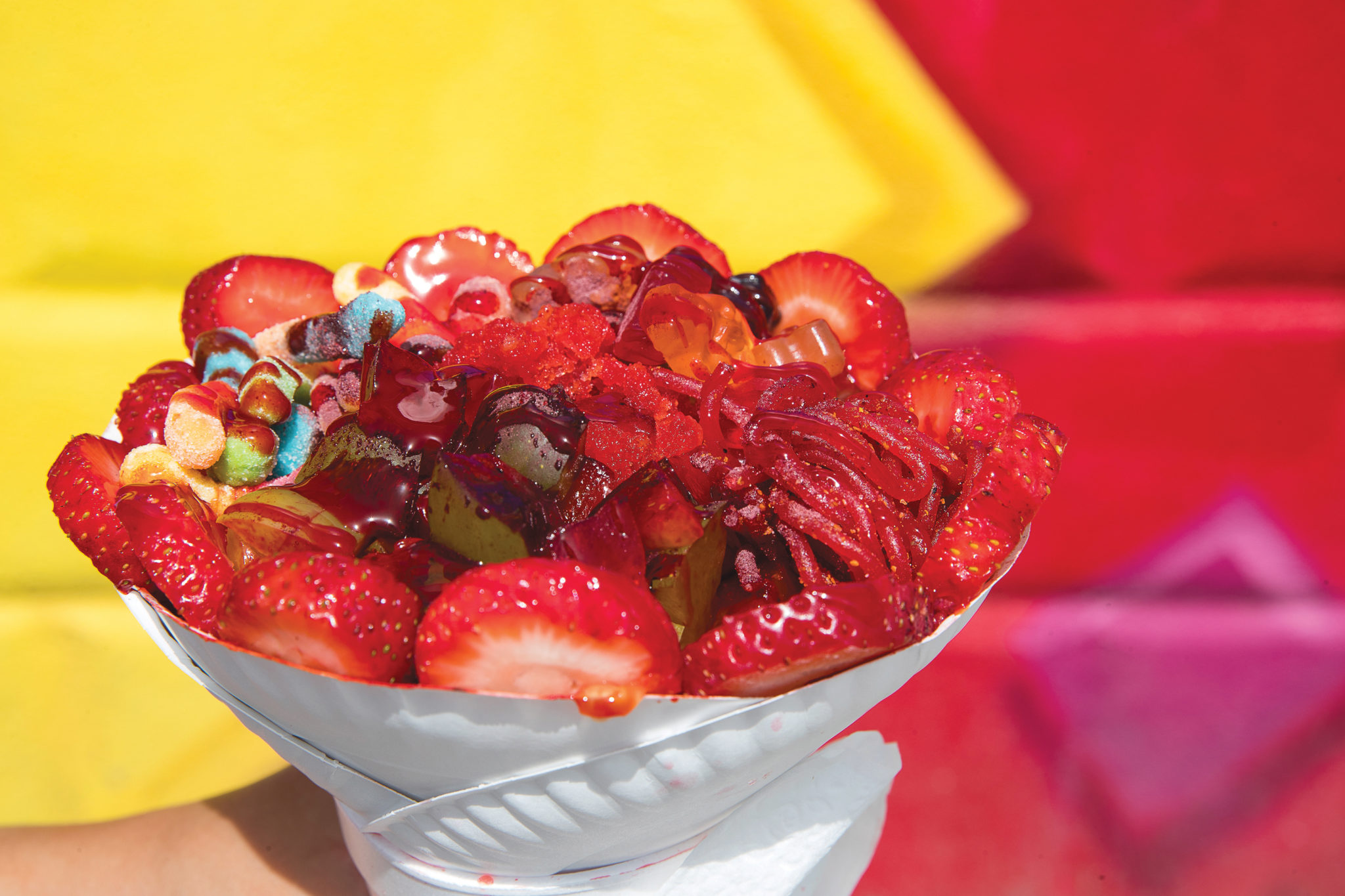
Raspa Revolution
A Rio Grande Valley tradition evolves for the social media age — with a few growing pains.
–
by Daniel Blue Tyx
September 4, 2018
It was 7:30 on a Friday night, and the line already stretched to the next block. A teenage carhop rushed back and forth between a row of waiting cars and a converted house, its walls airbrushed with a mashup of celebrities from Drake to Kim Kardashian to Selena. When she arrived to take orders, the customers, all in their teens or early 20s, rolled down their windows. They held up pictures on their phones as she scribbled in meticulous shorthand on her notepad. The goal: making the snow cone they would receive an hour or so later an exact replica of the image on the screen.
“Our motto is, ‘If we wouldn’t post it on Instagram, we won’t send it out,’” said Ashley Vasquez, co-owner of the Iced Cube raspa stand in Elsa, a community of about 6,000 people 20 miles northeast of McAllen. She watched from a pink picnic table, one eye on the line of cars, the other on her daughter playing T-ball in the yard. Every 15 minutes or so, she picked up her phone to post something new on social media. “You see the difference almost right away,” she explained, referring to the power of a single post to draw customers. “It’s crazy.”
Last summer, less than a month after Iced Cube opened, one of Vasquez’s posts went viral, igniting a summerlong frenzy with lines of up to 75 cars and four-hour wait times. The crowd eventually grew more manageable, at least on weekdays, but the whirlwind never stopped for its millennial owners. In its first year, Iced Cube has moved to a new, larger location, expanded from zero to 12 employees and created a new business model rapidly being imitated across the Rio Grande Valley.
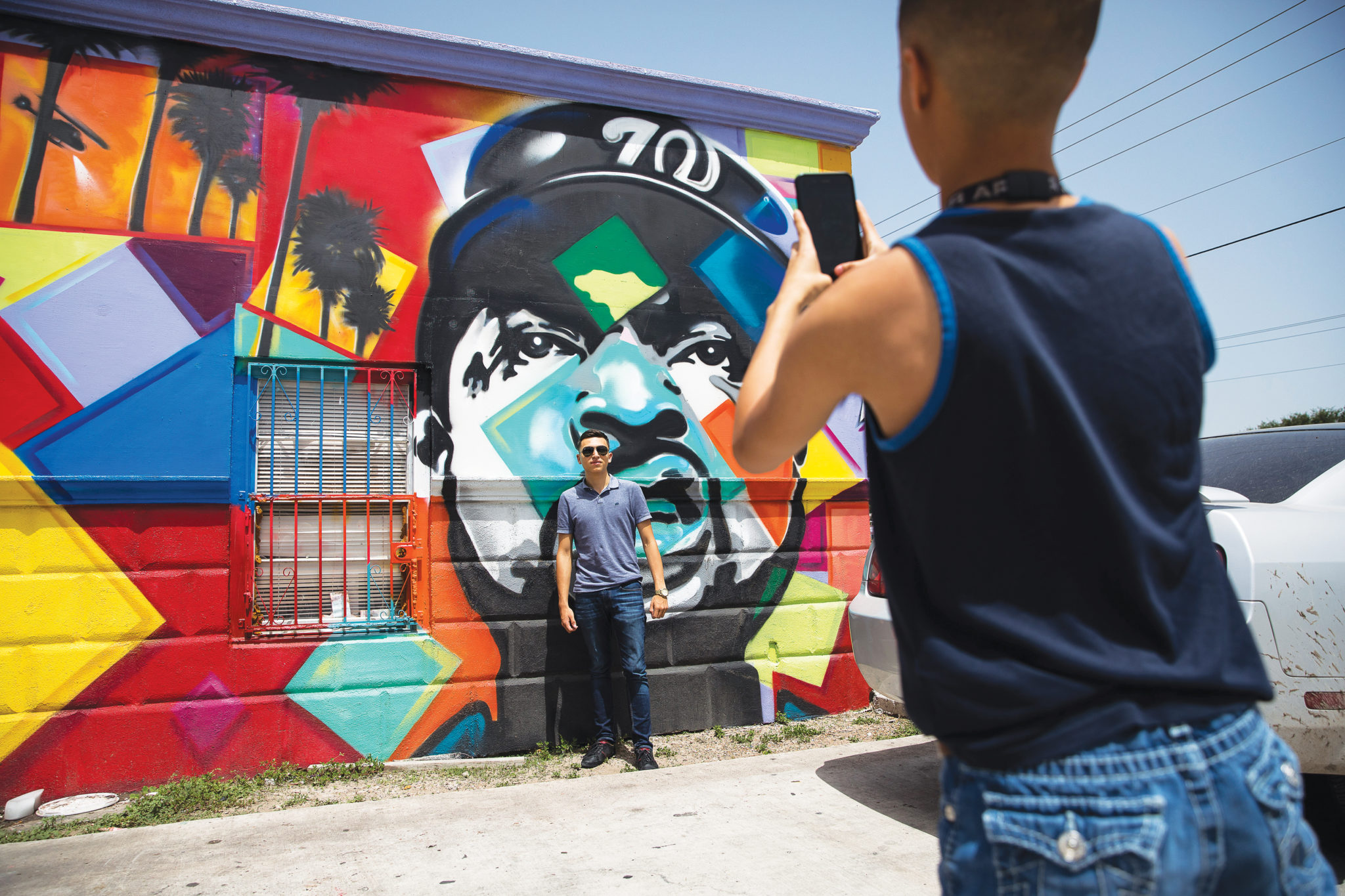
Yet this summer, Vasquez and her husband, Johnathan Segura, find themselves at a crossroads. Out-of-town investors are knocking on their door, franchise offers in hand. Meanwhile, a small cadre of neighbors, fed up with what they perceive as the city’s blind eye toward traffic problems, have taken matters into their own hands with measures ranging from vigilante traffic cops to strategically placed chained Chihuahuas — potentially putting the future of the stand at risk.
In this rural community, the conflict over Iced Cube reveals stark generational differences. Young people connected through social media flock to take selfies at the stand, while elders left out of the conversation express puzzlement over why anyone would wait so long when they could just go down the street to one of the neighborhood stands that’s been there for decades. As the town itself slowly transforms from agricultural outpost to bedroom community for the Valley’s coming megalopolis, the raspa wars show the growing pains of a region struggling to adopt a more cosmopolitan identity while also holding onto its roots.
–
Versions of the snow cone exist in cultures worldwide, from Hawaiian shaved ice to Taiwanese milk snow. In Mexico, the tradition of hielo raspado, or shaved ice, dates back to pre-Columbian times, when Teotihuacanos from near present-day Mexico City collected snow from the tops of volcanoes. Where South Texas raspas stand apart from their simpler Mexican raspado cousins, or the snowballs of Baltimore and New Orleans, is in the breadth and variety of flavors and toppings that include savory, spicy and sour options like pickles, Kool-Aid powder and chile.
Among Valley residents, the raspa has a unique place in the cultural lexicon, simultaneously evoking childhood nostalgia and streetwise border edginess. For young people who leave the Valley, often for college, raspas become closely identified with border identity. In “20 Things You Should Know About the Rio Grande Valley,” a widely circulated BuzzFeed list, No. 6 is, “We eat raspas. Not ‘snow cones.’ Whatever those are.” At the same time, within the Valley, individual stands have long been a source of community pride and rivalry on par with Friday night football games. “So much depends on your neighborhood snow cone stand,” said Eddie Margo, the second-generation owner of Margo’s Corner, a Weslaco stand that’s been in business for 35 years. “It’s not just a raspa. It’s your tribe.”
Unlike traditional stands, Iced Cube offers only one (enormous) size, and there’s no menu other than the pictures on social media. Prices top out at $12, depending on the number of toppings, which include novelties like Hot Cheetos that push the juxtaposition of flavors to the outer limits. “At first, people said it was too much,” Segura told me. “They called it ‘diabetes in a cup.’” But imitation has proved the sincerest form of flattery; like many other stands in the Valley, Margo’s now offers a super-sized option — its version is served in a Chinese takeout container — and Hot Cheetos has been added to the list of toppings.
In what used to be the house’s kitchen, NWA blared from overhead speakers as Segura supervised a crew of students from Edcouch-Elsa High School from beneath the brim of his ever-present Yankees cap. Two newbies dedicated themselves to chopping fruit and pickles, while the two most experienced crew members took orders. Five other workers crisscrossed the sticky floor, moving from one station to another: the whirring machines where the ice was shaved to a snow-like consistency, the syrup bottles, the Tupperware containers of gummy bears and Sour Rip Rolls. The raspas were assembled with architectural precision, using three paper plates wrapped inside the brim of a Styrofoam cup to support the weight of all the contents piled on top. “People are waiting a long time,” Segura said, as he nodded a final approval to an order before it went out the door. “I want to make sure it looks — and tastes — good.”
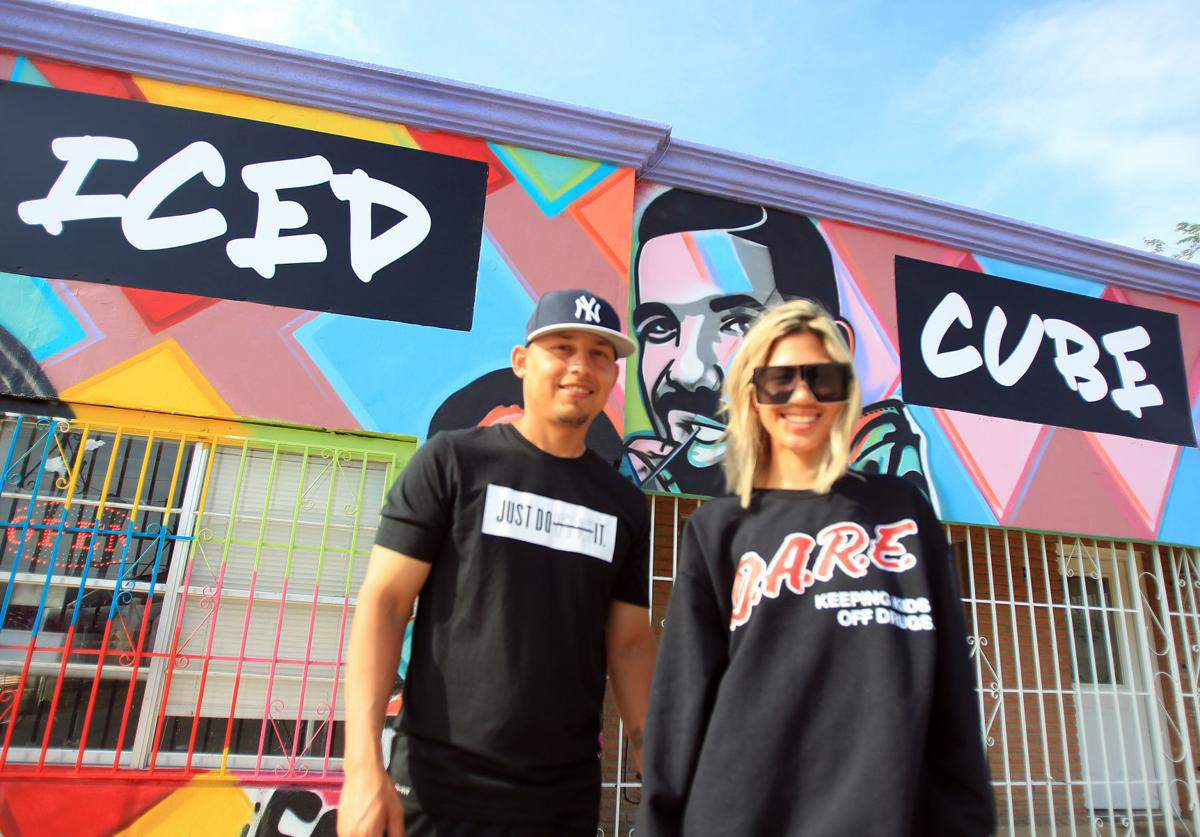
The process is a well-oiled machine now, but things haven’t always been so smooth. Iced Cube began out of desperate circumstances, after Segura lost his job as an oilfield worker. “We had a lot of money fast and young, and we blew it all,” Vasquez told me, after we’d retreated from the crowded kitchen to the living room, where her son sat playing video games and eating Hot Cheetos with cheese. Within weeks, the couple had their cars repossessed and were evicted from their apartment. They found themselves moving a mattress between the houses of friends and relatives, their two young children in tow, trying not to let on how bad things had become.
Vasquez started supporting the family by staging elaborate, glammed-up yard sales she advertised on social media. Her initial success inspired Segura to want to start a business as well. But when he floated the idea for Iced Cube, after seeing a for-rent sign at a vacant stand in a strip-mall parking lot, the proposal didn’t go over well. “Do you know how many raspa stands there are in just a 2-mile radius?” Vasquez asked. “I told him, ‘If we’re going to do this, it needs to be something different, and cool.’”
At first, it was just the two of them. She dreamed up the names, like the “Wrecking Ball” inspired by Miley Cyrus, or “Como La Flor” in homage to Selena. He made the actual raspa. Then, she posted a picture. “Social media is our key to everything,” Vasquez said. “Without it we would have just been a normal raspa stand.”
The tweet that went viral was a photo of their Drake-inspired “Views” raspa, held out by a faceless model like a bouquet of flowers. When Vasquez and Segura arrived the next day, 40 cars were already in line. It got only longer from there. As wait times grew to four hours, rumors started that Ice Cube himself was at the stand signing autographs. Customers watched Netflix and danced on the roofs of their trucks; the police were called four or five times a night to sort out traffic; cars running out of gas while idling became so routine that they started keeping a full gas can behind the stand.
Through it all, Segura insisted no one be turned away, since many customers had driven from out of town. The couple often stayed until 5 a.m., the kids sleeping together on a bench inside. “We never expected it to get so big,” Vasquez told me. “I mean, we’re just a raspa stand.”
–
The arrival of thousands of teenagers and 20-somethings from cities across South Texas has not been universally welcomed. In March, the landlord at the strip-mall trailer informed Vasquez and Segura she didn’t plan to renew their lease due to traffic concerns; the line often stretched for a quarter-mile. Fearful of having to close just as the busy summer season was about to begin, they were ecstatic when they saw the for-sale sign at the house a mile down the same road. But contrary to their hopes, the move has only made traffic worse; the line now backs up into a residential neighborhood.
Within Elsa, support for Iced Cube has predictably broken down according to age. “We’re a very small community,” Elsa Economic Development Corporation Director Jessica Garza said over the phone. “The young ones are the ones who favor this business.” Garza told me her teenage daughter is a regular at the stand. “She’s always wanting to go over there. Of course, as a parent, I’m like, ‘I’m not waiting an hour in line for a raspa.’”
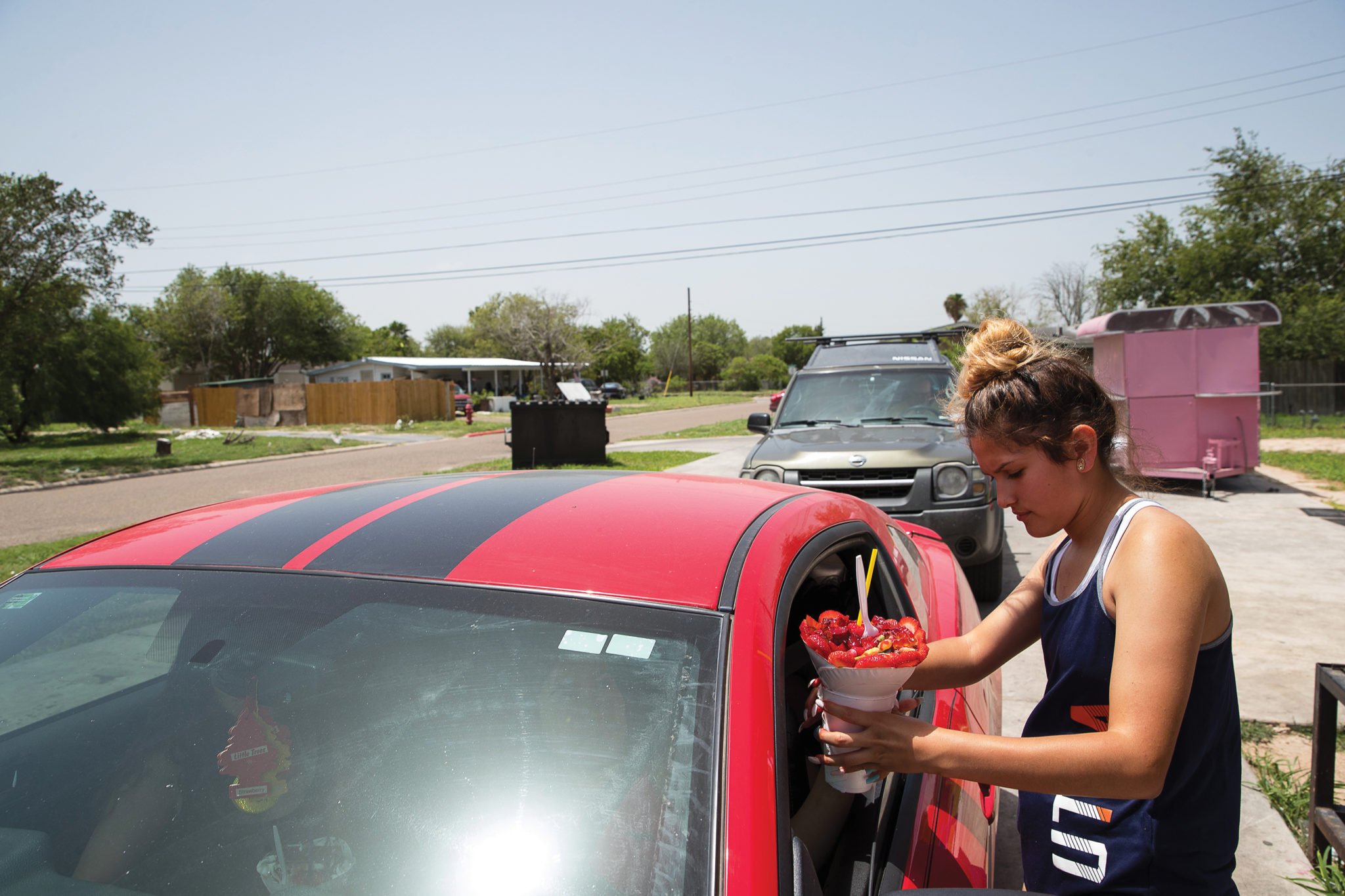
When I drove to Elsa to interview Zeke Avila, a neighbor who has been one of Iced Cube’s most vocal critics, he wasn’t at home. Instead, I found him sitting in his red pickup in the middle of the raspa line — except his truck was facing in the opposite direction. Frustrated by what he sees as the city’s unwillingness to correct the right-of-way issue, he has taken to patrolling the street himself.
“They just continue being on the wrong side of the road,” the 40-something health and safety inspector and Navy veteran told me, after we’d made our way to the living room of the house he’d grown up in with his parents and three siblings in the 1980s. Now, he has two 13-year-olds — a daughter and a stepdaughter, both of whom are also Iced Cube customers — and a toddler, who’d fallen asleep watching cartoons in the TV room. “The traffic, that’s really the issue,” he said.
In fact, I had a pretty good idea why customers might wait on the wrong side. Across the street, next to a hand-painted sign that read DO NOT BLOCK DRIVEWAY, four yapping Chihuahuas had been chained up close enough to the road that they could almost, but not quite, reach cars that ventured into their territory. Earlier, when I’d approached the dogs’ owner in his yard, he’d hurled obscenities and racial epithets and given his name only as Alcala — presumably after a famed Los Angeles serial killer.
The conflict came to a head just weeks later — as the result, in part, of a social media post. For weeks, Vasquez had been frustrated by an uptick in police patrols, which she viewed as bad for business. So, when a customer called the police to report verbal harassment by the neighbor with the Chihuahuas — and, from Vasquez’s perspective, nothing happened — she’d had enough. She fired off an angry Facebook post about the episode, which quickly went viral itself. “As a woman, to have the cops there watching me, and the two neighbors there watching me — all men — it made me feel backed into a corner,” she told me later. “I felt harassed.”
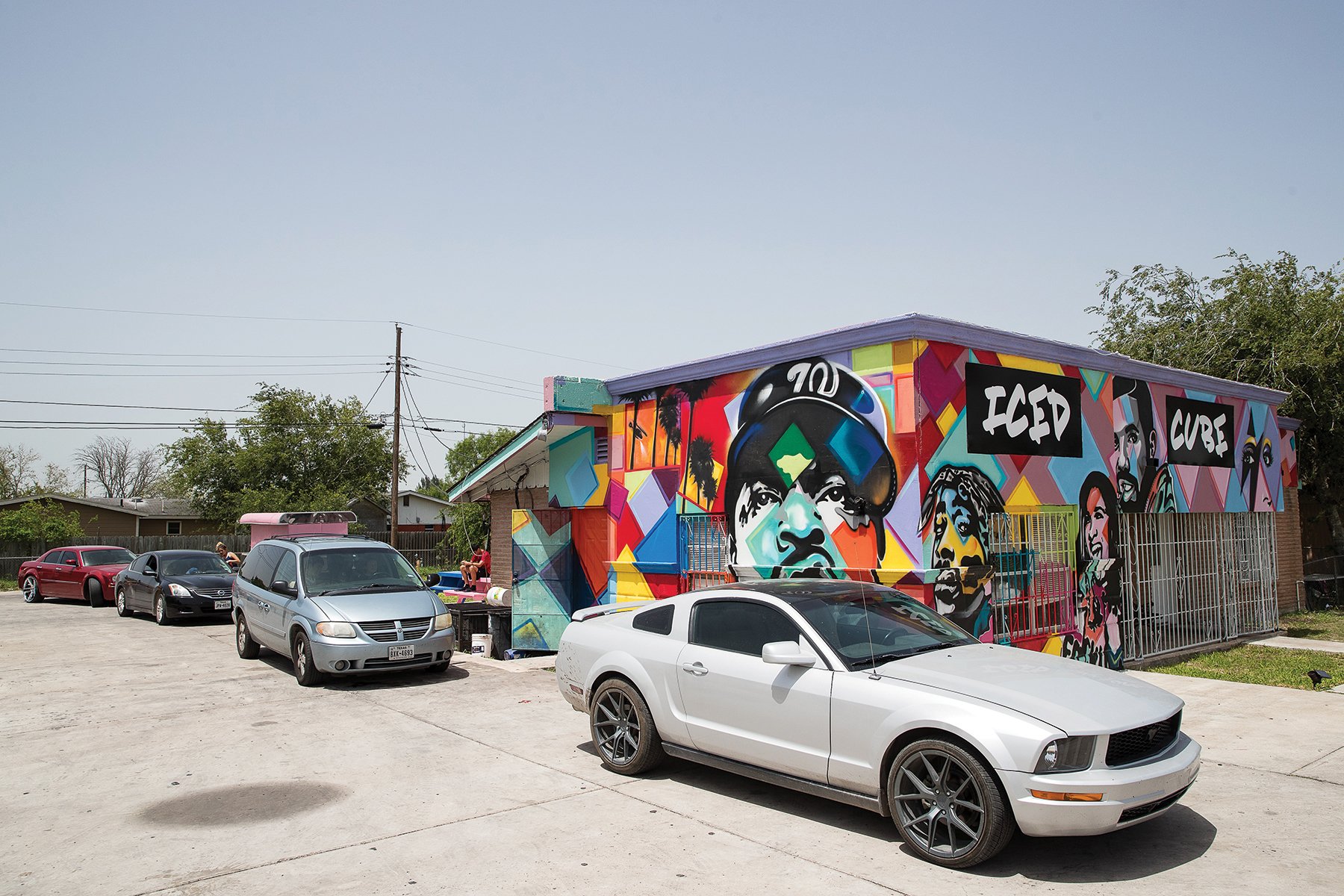
The city called the next morning to set up a meeting, which took place the same day. The police chief, planning director and other officials were in attendance. By all accounts, the meeting was amicable, and Vasquez reported to me a few days later that the police had stopped their patrols. “The city is serving the role of mediator,” City Manager J.J. Ybarra wrote in an email. “We feel confident a resolution will be found and all parties will be content.”
For residents like Zeke Avila, though, perhaps no resolution can be found for their larger concerns about Elsa’s changing identity. In our conversation, which soon turned to his memories of the neighborhood growing up, he evinced quiet nostalgia for a time when the city moved at a different pace. Elsa’s population has grown by nearly 1,000 residents since 2010, and the drive from Edinburg on Highway 107 reveals legions of newly constructed strip malls that have sprung up on what used to be fields of cotton and cabbages. “We grew up knowing neighbors,” he told me. “It was really quiet. Back then, you used to know people. Now you go to HEB, or Walmart, or wherever, and you look out there into this sea of individuals, and you’re just like, ‘Who are they?’”
–
Iced Cube’s popularity hasn’t gone unnoticed outside the Valley. Over the last few months, investors have come repeatedly to the stand, looking to start Iced Cubes in San Antonio, Houston and Austin. So far, Vasquez and Segura have politely declined. “We will eventually franchise,” Vasquez told me, back at the pink picnic table on Friday night. “But when you start a business … it’s really hard to let someone in, no matter how much they’re willing to invest. Right now, we’re just kind of like, ‘Hey, this is what we did. We did this. Together, alone.’”
Despite Iced Cube’s successes, the memory of the oil industry’s boom-and-bust cycle is never far from either owner’s mind. Since the stand opened last June, they haven’t closed a single day, not even for Christmas or Easter. “It’s insane, I know,” Vasquez told me. “But I’m really scared to get too comfortable. I feel like the moment I do, that’s when things will start to go south.”
The fear of losing everything all over again is part of why Vasquez and Segura feel paranoid about their dealings with the neighbors and the city. It’s also what drives Vasquez to post so many photos to social media — even when the line is already plenty long.
At the next table, a group of college-age friends from nearby Raymondville was braving the triple-digit heat to enjoy their raspas outside their car. One of them had what looked like an old-school film camera slung over his neck. He snapped pictures as they ate. Noticing them, Vasquez got up from her seat, taking her phone along with her. “You’re all so beautiful,” she said. “Can I take a picture for Twitter?”


